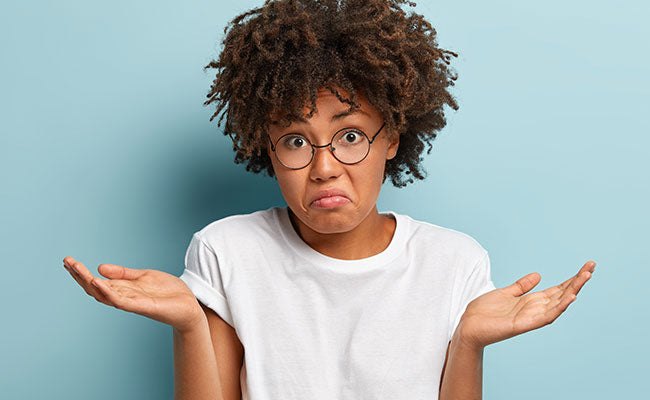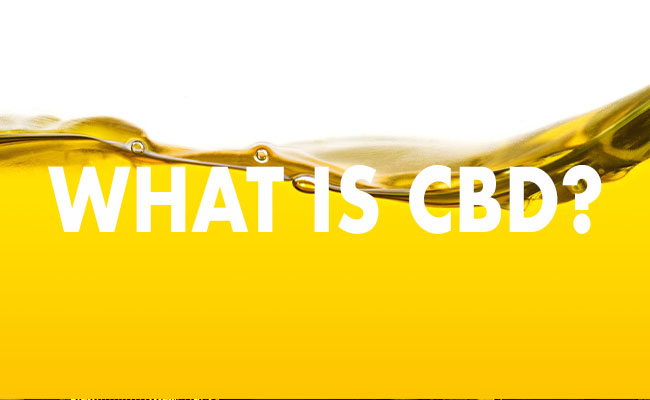
National CBD Month | CBD Tincture vs. Oil: What's the Difference?
WRITTEN BY SHALINI RANA AND DR. SWATHI
CBD is a well known cannabinoid that can have calming effects on your mind, body, and soul. There are many different ways that CBD can be formulated, and each can affect how well CBD gets absorbed into your body. Two popular formulations are CBD oils and CBD tinctures, and you may even hear the two terms used interchangeably. But what exactly is the difference between the two? Let’s take a deeper look into this question as well as how to increase absorption of CBD.
What is CBD Oil?
CBD oils are products with an oil base that suspend CBD and other ingredients in that oil. They can use various oil types as the base such as coconut oil (like MCT), olive oil, or hemp oil [1]. CBD oils are a great option to consider if you are looking for a CBD product because they are easy to dose, as they often come in a bottle with a dropper and they have the ability to be mixed with foods and beverages. A wide range of potencies and flavors are available. Compared to alcohol-based CBD tinctures, CBD oils typically contain fewer ingredients and tend to have a stronger flavor [2].
What is a CBD Tincture?
Originally in Traditional Chinese Medicine, the concept of tincture involved using high proof alcohol as a base for an active botanical ingredient. Currently, the terms CBD oil and CBD tincture are being used interchangeably, even though the term tincture usually denotes that it is alcohol-based.
Producing alcohol-based CBD tinctures typically involves soaking the cannabis plant in alcohol for several weeks, followed by refinement and filtration into a highly concentrated extract of CBD [3]. Due to the additional refinement and filtration processes necessary for this formulation, alcohol-based CBD tinctures have more protection against oxidation compared to oils, but they can be more costly to produce. Additionally, the alcohol base can give tinctures a bitter taste, so you’ll often find them containing more ingredients than oils, such as sweeteners, flavorings, and supplements.
Alcohol-based tinctures are easy to dose, similarly to oils, as they also come in a bottle with a dropper. They too can be mixed with food and beverages and can have really fast absorption when taken sublingually.
Why you may mistake a CBD tincture for a CBD oil
The terms ‘oil’ and ‘tincture’ are typically used interchangeably in the CBD market, despite the two formulations having different base ingredients. As a result, many products can be mislabeled as CBD oil-tinctures or CBD tinctures when they’re actually oils. If you are looking for a tincture, be sure to look for a product that says ‘alcohol-based’ tincture or to ask the seller [2].
What are the main differences between CBD oils and CBD tinctures? How do I know which one to choose?
The two main differences between CBD oils and tinctures is their production process and their base ingredient, oil or alcohol. Additional differences, such as quantity and types of ingredients used, can vary from product to product. Deciding on a product will depend on your preferences regarding these differences. For example, if you have a sensitivity to certain flavorings or supplements, you may want to opt for a CBD oil since they tend to have fewer ingredients. On the other hand, if you are allergic to certain oils (like coconut or MCT oils) or want a longer-lasting product, you may want to go with an alcohol-based CBD because tinctures are less prone to oxidation [2].
How to use a CBD oil or tincture
CBD oils and tinctures can be used topically or orally. When using orally, drops of the CBD oil or tincture can be placed into the mouth and swallowed, mixed with food/water and then swallowed, or placed under the tongue for sublingual absorption. A common way that people tend to take CBD oil is by adding drops to their coffee in the morning [1]. CBD tinctures are more often taken sublingually under the tongue because of their tendency to be bitter.
Swallowing the product compared to placing the product under the tongue can give you different results in terms of how much of your dose will actually make it to your bloodstream. This is because when swallowed, CBD goes through the digestive system and is subject to the liver’s metabolism and elimination before the product can reach the bloodstream. As a result, a percentage of your dose will be lost to metabolism, so you may experience milder effects than if you were to take the product sublingually. The sublingual route involves placing drops of your product under the tongue where it is absorbed through its mucous membranes directly into your bloodstream. This method allows the product to skip any potential metabolism or elimination, so more of your dose will get to your blood.
In terms of time of onset and duration of action, swallowing and digesting a product will result in your body taking longer to show the effects of the CBD, but the effects will last longer than if the product was taken sublingually. If taken sublingually, a product will have more rapid absorption and can produce effects more quickly, but these effects will not last as long. So, swallowing your product can be effective to achieve a steady baseline of CBD whereas using your product sublingually can be useful when looking for rapid relief [5].
How to increase sublingual absorption of CBD
The longer a product sits under your tongue, the greater the sublingual absorption will be, and the greater the amount that reaches your bloodstream to produce effects will be. To increase sublingual absorption, allow the product to sit under the tongue for at least 60 seconds before swallowing.
If you are searching for a good CBD tincture, check out the Be Well tincture. It combines CBD, CBG, CBN, and other plant based remedies. To use, take 0.25-0.5 mLs of the tincture using the marked dropper and place the product under your tongue. Let it sit there for 30-60 seconds and then swallow. If you are new to CBD, start with 0.25 mL, or 1/4 dropper, and monitor how you feel after that dose. After 1-3 weeks, you can gradually increase the dose to see which dose is best for you. Lessen the dose if you notice undesirable effects like feeling drowsy, and if you have any questions, feel free to reach out to our Chief Scientific Officer, Dr. Swathi.
References
- Stone E. CBD Oil vs. Tincture: What’s the Difference? leafwell.com. Accessed December 2022. https://leafwell.com/blog/cbd-tincture-vs-oil/
- Timmons J. CBD Oil vs. Tincture: What’s the Difference? healthline.com. Updated June 14, 2022. Accessed December 2022. https://www.healthline.com/health/cbd-oil-vs-tincture
- Gardner A. Here’s What You Should Know About CBD Tinctures. thehealthy.com. Updated March 4, 2021. Accessed December 2022. https://www.thehealthy.com/alternative-medicine/cbd-tincture/
- Hoffman R. How to Increase Sublingual CBD Absorption. myeq.com. January 12, 2022. Accessed December 2022. https://myeq.com/blog/basics/sublingual-cbd/
–
This article was edited by Dr. Swathi and was written by Element Apothec Scientific Communications Intern, Shalini Rana. She is a Doctor of Pharmacy (PharmD) candidate at Rutgers University Ernest Mario School of Pharmacy in Piscataway, New Jersey.











